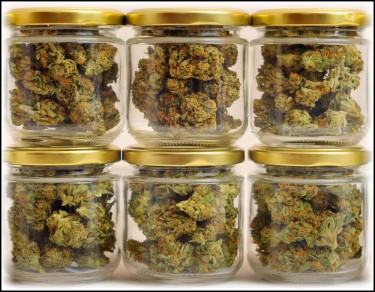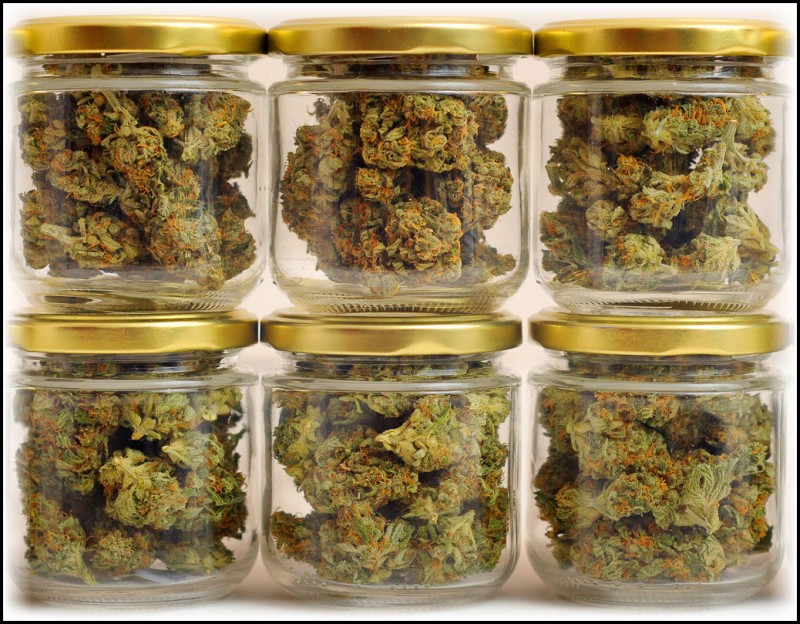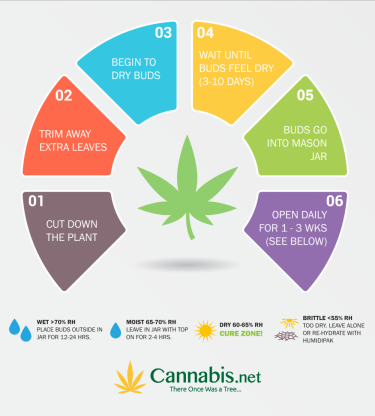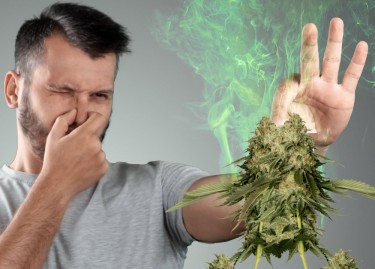How Drying and Curing Methods Can Make or Break Your Marijuana Harvest

You should know now that drying and curing cannabis buds are a critical post-harvest process if you didn't already know. This is a process that can boost the taste and overall quality of your marijuana crop. After harvesting your plants, it is straightforward to celebrate the milestone because all your hard work has birthed yields from your farm.
But your job isn't complete yet as you still have t0 cure and dry the marijuana immediately. Curing entails slowly drying your marijuana buds in a cool place. Then you need to keep the dried buds in strong mason jars for a few weeks.
Soon enough, you will perceive that marijuana smell and the most refreshing taste. This is one of the best deals you can get with your cannabis plant, and it is why we are talking about it.
Marijuana curing increases potency.
You don't have to bother going through the growing and harvesting process if you are planting cannabis for fun. But if you want to get potent marijuana, you must be willing to go through the curing and drying process.
During biosynthesis, the marijuana plant releases tetrahydrocannabinolic acid (THCA) and other cannabinoids. The process entails converting some compounds into several blends (a good example is THCA becoming THC).
Your inability to effectively cure cannabis means it will contain a lower level of THC and other cannabinoids. When you cut the marijuana plant, ensure to keep it in temperatures at 60-70 degrees Fahrenheit. It is crucial to maintain proper humidity as by doing this, you will enable the biosynthesis process, so your plant is full of THC.
The curing affects flavor and the quality of smoke
If you didn't know, now you know that the distinctive smell and pleasant taste of marijuana you like are due to the terpene it contains. But these terpenes are fragile compounds that are also volatile; they could evaporate or even degrade when exposed to very low temperatures.
The companies that produce low-grade cannabis at a mass production level use rapid-fire, very hot marijuana drying. So this is how curing and drying break your plant: when you use boiling drying processes. For excellent quality bud, you have to use a slow curing process to preserve the terpene content.
If cannabis is poorly cured, it creates an environment for bacteria and enzymes to break away from all unwanted materials. It also enables the breaking down of all unhealthy sugars that build up when chlorophyll decays. The sugars and minerals enable an unpleasant throat burn when you smoke cannabis.
Curing preserves your marijuana.
If you want to store your marijuana for a long time, you will need high-quality curing processes. When the plant is correctly cured, you can keep it in an airtight container for up to two years, with the plant retaining its potency. If you store it any other way, it may lose its cannabinoid substance, making it vulnerable to mold growth.
How to dry and cure your marijuana
The key to preventing your cannabis plant from being negatively affected when you cure or dry it is to learn how to do it effectively. You've got to learn how to dry and cure the buds in a way that it retains all its goodness and is still very flavorful when smoked.
Leaving your marijuana in high nighttime humidity in coastal areas will make the weed quickly become hard, and cannabis placed in such locations will be at an increased risk of mold attack. The best time for any grower to cure and dry is in winter or fall.
If you live in warmer clime or an area with high elevation (a good example is Denver), it will be a different situation. While in Nevada and Arizona, the temperature can o from 28-115 degrees Fahrenheit in a year with low humidity levels. Some growers use paper bags to dry cannabis, but some question that technique as well.
For example, if you live in a p Denver with 0 degrees Fahrenheit and even lower sometimes to 100 degrees in summer, you must pay close attention to your curing and drying process. The cannabis buds should ideally react like a marshmallow does when it is squeezed.
If the plants are dehydrated, they will fall apart and turn into a dry powder. Although it is easy to cure and dry small amounts of weed, the more significant challenge is doing it with commercial quantities. When curing and drying on a retail level, do not assume a particular elevation, humidity, or temperature you need. You need to work around what the plants need at that time and stick to it.
Remember to keep your drying room properly ventilated so fresh air can come in from the surrounding environment. Ensure you've got reasonable odor control to get rid of exhausted air, and when the temperature is very low, it can lead to marijuana that is high in chlorophyll which isn't good enough. Some growers ice-dry or freeze-dry the plants but only use this technique when you are sure it will boost your plant's health.
What are proactive ways to dry your cannabis?
Before taking on the drying and curing process, ensure that you've got this equipment:
-
Humidipacks
-
Hygrometer
-
Drying rack
-
Wide-mouth mason jars (this will work for all your plants)
Bottom Line
In prior times, a lot of attention wasn't paid to the drying and curing process. In fact, the aim was to sell as much marijuana as possible, which also meant that an essential part of the process was neglected. This also helps to explain the low quality of weed that has increased in the market.
Today, the competition in the industry has made several marijuana producers pay better attention to curing and drying their products. Fortunately, you don't require any specialized equipment, which means you can do it at home with your home-grown marijuana.
Ensure that you start the process early after harvesting, so you don't risk reducing the quality of the plant. There is a thin line between over-drying and when you don't dry enough. You can gain mastery with consistent practice.
HOW TO CURE YOU CANNABIS PLANTS, READ MORE...
THE COMPLETE GUIDE TO DRYING AND CURING YOUR CANNABIS PLANTS!







